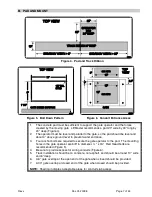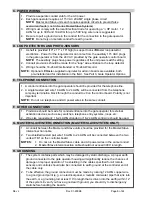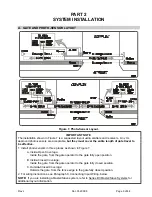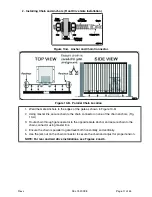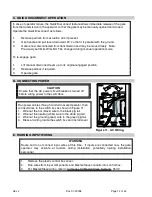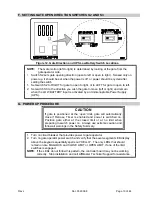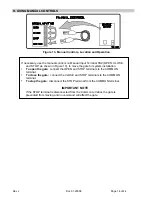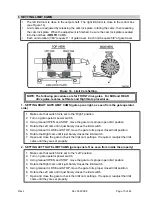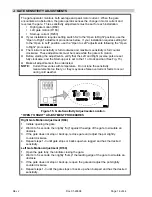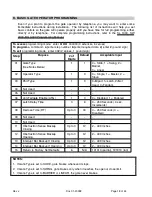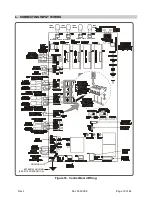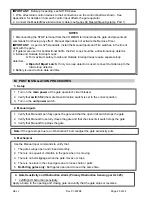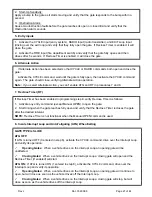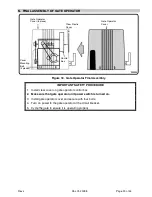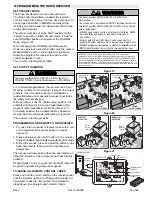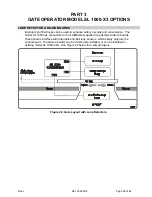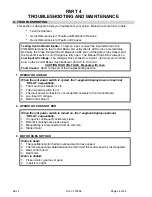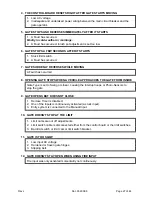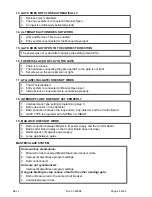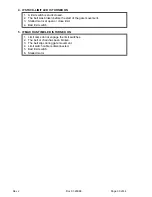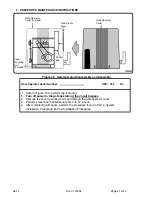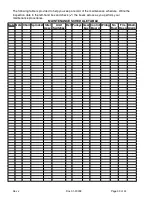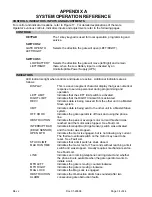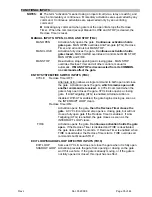
Rev J
Doc 01-20098
Page 20 of 44
IMPORTANT:
Before proceeding, see NOTES below.
1. Wire all external control devices to their connections on the control board as shown. See
Appendix A for details on how each control input affects the gate operator.
2. Connect the Master/Slave interconnect cable (see Series X3 Master/Slave Systems, Part 1).
NOTES
1. Disconnecting the STOP terminal from the COMMON terminal stops the gate and prevents all
commands from having any effect. Manual Open does not activate the Reclose Timer.
IMPORTANT:
As per UL325 standards, install the Manual Inputs and Fire switches in the line of
sight with the gate.
2. If gate(s) are used for bi-directional traffic, the Exit Loop should be a directional loop detector.
3. Inside and Outside Interrupt Loops:
♦
For maximum safety, Inside and Outside Interrupt loops require separate loop
detectors.
♦
Bipart of Bipart Latch:
If only one loop detector is used, connect Outside loop to the
Inside loop detector.
4. Battery is used to store date and time.
M. POST INSTALLATION PROCEDURES
1. Setup
1. Turn on the
main power
at the gate operator's circuit breaker.
2. Verify
that
switch S2
(the Gate Open Direction switch) is set to the correct position.
3. Turn on the
unit power
switch
.
2. Manual inputs
1. Verify that Manual Open fully opens the gate and that the open limit switch stops the gate.
2. Verify that Manual Close fully closes the gate and that the close limit switch stops the gate.
3. Verify that Manual Stop stops the gate.
Note:
If the gate stops due to an Obstruction Fault, readjust the gate sensitivity pots.
3. Mechanical
Use the Manual Input commands to verify that:
1. The gate swings open and closed smoothly.
2. There is no squeak or vibration in the gate when it is moving .
3. There is no belt slippage when the gate moves or stops.
4. There is no slack in the closed gate due to loose chain or parts.
5.
Bi-Parting gates only:
Both gates open and close at the same time.
4. Gate Sensitivity and Obstruction Alarm (Primary Obstruction Sensing per UL 325)
1. Left/Right Obstruction sensitivity:
Apply a bump to the opening and closing gate and verify that the gate stops or reverses.


